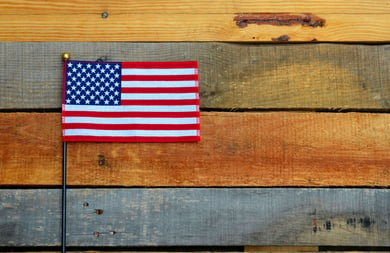How do I import wood products into the U.S.?
Plywood, flooring, crates, sculptures… When moving wood items across the border, importers need to know what’s required of them by customs and other regulatory agencies.
We’ve had a lot of interest in previous blogs on this topic so let’s revisit it to make sure importers know all they need to. Wood articles fall into a few different categories and they are often treated differently than other types of imports. (Those importing into Canada will also want to check out our earlier blog from the Canadian perspective).
Import Requirements
Import requirements vary depending on factors such as the type of product, its dimensions, the quantity you’re bringing in and where it comes from – among others. Because there’s so much variability in wood items their requirements, it’s best to check with the relevant regulatory body to ensure compliance. It’s also advisable to consult a customs broker who’s well-versed in the import requirements for all manner of goods.
In the U.S., the Animal and Plant Health Inspection Service – “APHIS”, part of the U.S. Department of Agriculture – regulates the movement of wood, plants and related materials across the border to ensure pests or diseases do not enter the country.
APHIS requires importers of most wood products to obtain a Timber and Timber Products Import Permit, available online on the APHIS ePermit website. An in-person APHIS inspection of the shipment is also usually required, and is done at one of 12 inspection stations located throughout the U.S.

That's Not All...
Other tidbits wood importers need to be aware of:
- Bark-containing wood products from China: These are usually not allowed into the U.S.
- Wood from endangered species: Check for applicable regulations under the Convention on International Trade in Endangered Species (CITES) for information.
- Extra fees: There may be extra fees associated with importing wood from certain countries.
- Wood furniture: May be subject to extra fees, depending on the country of origin. Most wood furniture imported from China requires payment of anti-dumping duties.
- Wood packing material: For example, pallets, crates and shavings. Subject to their own requirements, as detailed in an earlier blog on this topic, these items must have been treated prior to entering the U.S., per the International Standards of Phytosanitary Measures. For more detailed information, see the U.S. customs website and the APHIS website.
As with all customs matters, clear and accurate documentation is key. For starters, make sure to include all of the following information in the customs documentation for each import:
- Country of origin (and country of export, if different)
- Thickness/dimensions
- Bark (presence/absence)
- Treatment status (detail any heat or chemical treatment it has had)
- Tree species (not always required, but indicate if known)
- Finish (is the item painted, lacquered or unfinished?)
Because import requirements can change over time, it’s always best to check with U.S. customs or your customs broker before you purchase and import wooden articles.
Additional Resources
Need more information about importing wood into the U.S.? Check out the links below:
- Plant health import requirements from APHIS
- Plant health permits information and application page
- APHIS timber and timber products FAQs
- FAQs on phytosanitary requirements from APHIS
And, let our U.S. customs consultants make the whole process easy on you. With over six decades of experience, our logistics professionals have a wealth of knowledge from helping clients move countless shipments throughout North America and around the world. If you have questions about importing wood products or any other customs matter...
Information provided by: Customs Brokerage Dept. - Cole International

Latest Articles
- Watch out for these extra charges on your freight bill
- Key differences between duty drawbacks and duty refunds for importers
- Mitigating container shortages and rising shipping prices for ocean imports
- How Canadian importers benefit from end use tariff codes and conditional relief
- The benefits of operating as a Non-Resident Importer in Canada
